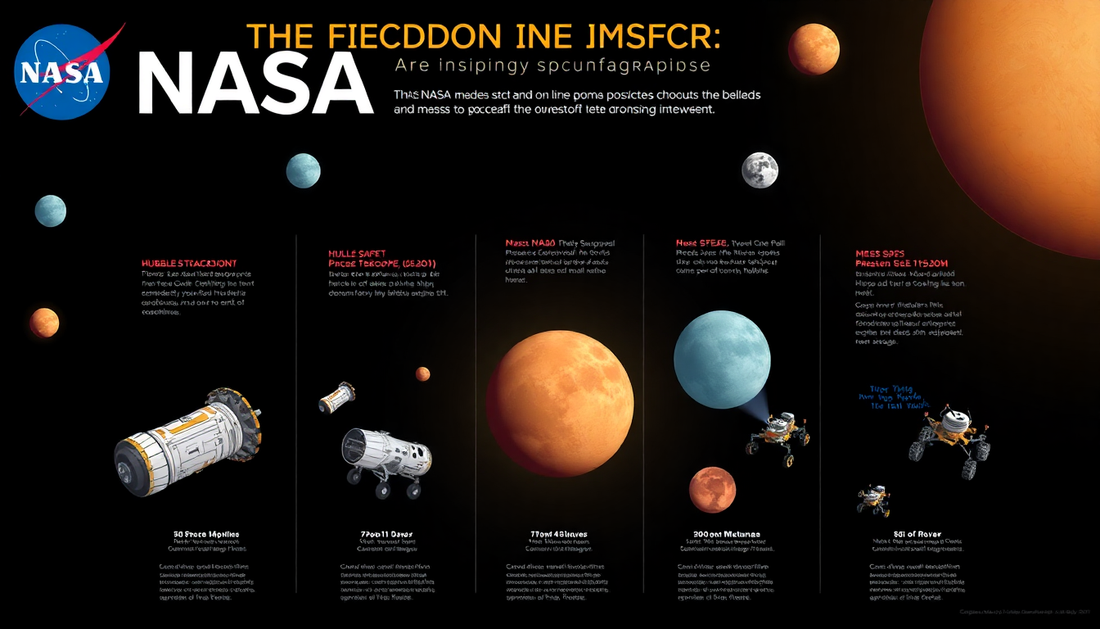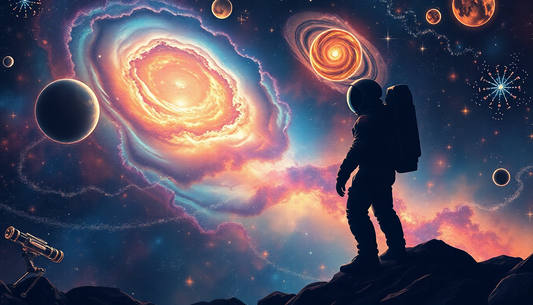
Top 5 NASA Missions That Changed History
In the vast expanse of human exploration, few organizations have left an indelible mark on the course of history like the National Aeronautics and Space Administration (NASA). From the dawn of the Space Age to the modern era, NASA's pioneering missions have pushed the boundaries of what's possible, inspiring generations and forever altering our understanding of the universe.
In this blog post, we'll delve into the top 5 NASA missions that have truly changed the course of history, each one a testament to the ingenuity, determination, and sheer audacity of the human spirit.
1. Apollo 11: The First Steps on the Moon
The year was 1969, and the world held its breath as Neil Armstrong and Buzz Aldrin descended upon the lunar surface, becoming the first humans to set foot on another celestial body. The Apollo 11 mission, a culmination of years of meticulous planning and technological advancement, not only fulfilled President John F. Kennedy's bold vision of "landing a man on the Moon and returning him safely to the Earth" but also ushered in a new era of space exploration.
The iconic images of Armstrong's first steps, the planting of the American flag, and the triumphant return of the astronauts captivated the global audience, sparking a renewed sense of wonder and possibility. This historic achievement not only demonstrated the incredible capabilities of the human mind and spirit but also served as a testament to the power of international cooperation and scientific collaboration.
2. Voyager 1 and 2: Exploring the Outer Solar System
Launched in 1977, the Voyager 1 and 2 spacecraft embarked on an ambitious journey to explore the outer solar system, becoming the first human-made objects to venture beyond the confines of our planet's immediate neighborhood. These twin probes, equipped with an array of scientific instruments, provided unprecedented insights into the gas giants Jupiter and Saturn, as well as their myriad of moons.
The Voyager missions not only captured stunning images of these distant worlds but also made groundbreaking discoveries that fundamentally changed our understanding of planetary science. From the intricate ring systems of Saturn to the active volcanoes of Io, the Voyager probes unveiled a universe far more complex and dynamic than anyone had ever imagined.
Perhaps one of the most poignant moments in the Voyager legacy was the capture of the "Pale Blue Dot" image, a photograph of Earth taken from the edge of the solar system that served as a powerful reminder of our fragile existence in the vast cosmic ocean.
3. Hubble Space Telescope: Revolutionizing Astronomy
Launched in 1990, the Hubble Space Telescope has been a game-changer in the field of astronomy, providing a window into the cosmos that has revolutionized our understanding of the universe. Unlike ground-based telescopes, Hubble's location above the Earth's atmosphere has allowed it to capture images and data with unprecedented clarity and detail, shedding light on the formation and evolution of galaxies, the nature of dark matter and dark energy, and the origins of our own solar system.
From the iconic "Pillars of Creation" in the Eagle Nebula to the stunning images of distant galaxies, the Hubble Space Telescope has captivated the public's imagination and inspired countless scientific breakthroughs. Its longevity and continued operation, despite the challenges it has faced, are a testament to the dedication and ingenuity of the scientists and engineers who have worked tirelessly to maintain and upgrade this remarkable instrument.
4. Mars Exploration: The Search for Life
The exploration of Mars has been a long-standing priority for NASA, with a series of successful missions that have transformed our understanding of the Red Planet. From the Viking landers of the 1970s to the more recent Curiosity and Perseverance rovers, these intrepid spacecraft have uncovered a wealth of information about the geology, climate, and potential for life on Mars.
The Mars Exploration program has not only provided stunning images and data but has also paved the way for future human exploration of the planet. The discovery of ancient riverbeds, evidence of past water activity, and the potential for habitable environments have fueled the search for signs of extraterrestrial life, captivating the public's imagination and inspiring a new generation of scientists and explorers.
As the search for life on Mars continues, the lessons learned from these missions will undoubtedly shape the future of space exploration and our understanding of the origins of life in the universe.
5. James Webb Space Telescope: Unlocking the Secrets of the Universe
The James Webb Space Telescope, launched in 2021, represents the culmination of decades of scientific and technological advancement, ushering in a new era of astronomical discovery. Designed to peer deeper into the cosmos than ever before, this state-of-the-art observatory has the potential to revolutionize our understanding of the formation and evolution of galaxies, the nature of dark matter and dark energy, and the origins of life itself.
With its unprecedented infrared imaging capabilities and advanced spectroscopic instruments, the James Webb Space Telescope is poised to unlock the secrets of the earliest galaxies, providing insights into the very beginnings of the universe. By observing the faint, redshifted light from the first stars and galaxies, the telescope will shed light on the processes that shaped the cosmos in its infancy, offering a glimpse into the fundamental laws that govern the universe.
As the successor to the iconic Hubble Space Telescope, the James Webb Space Telescope represents a new frontier in space exploration, inspiring a new generation of scientists and captivating the public's imagination with the promise of groundbreaking discoveries that will forever change our understanding of the universe.
These five NASA missions, each a testament to human ingenuity and the relentless pursuit of knowledge, have left an indelible mark on the course of history. From the first steps on the Moon to the exploration of distant worlds and the unraveling of the universe's secrets, these pioneering endeavors have not only expanded the boundaries of human exploration but have also ignited the spark of wonder and curiosity that drives us ever forward.
As we continue to push the limits of what's possible, the legacy of these transformative NASA missions will undoubtedly inspire generations to come, guiding us on our journey to uncover the mysteries of the cosmos and unlock the full potential of the human spirit.


